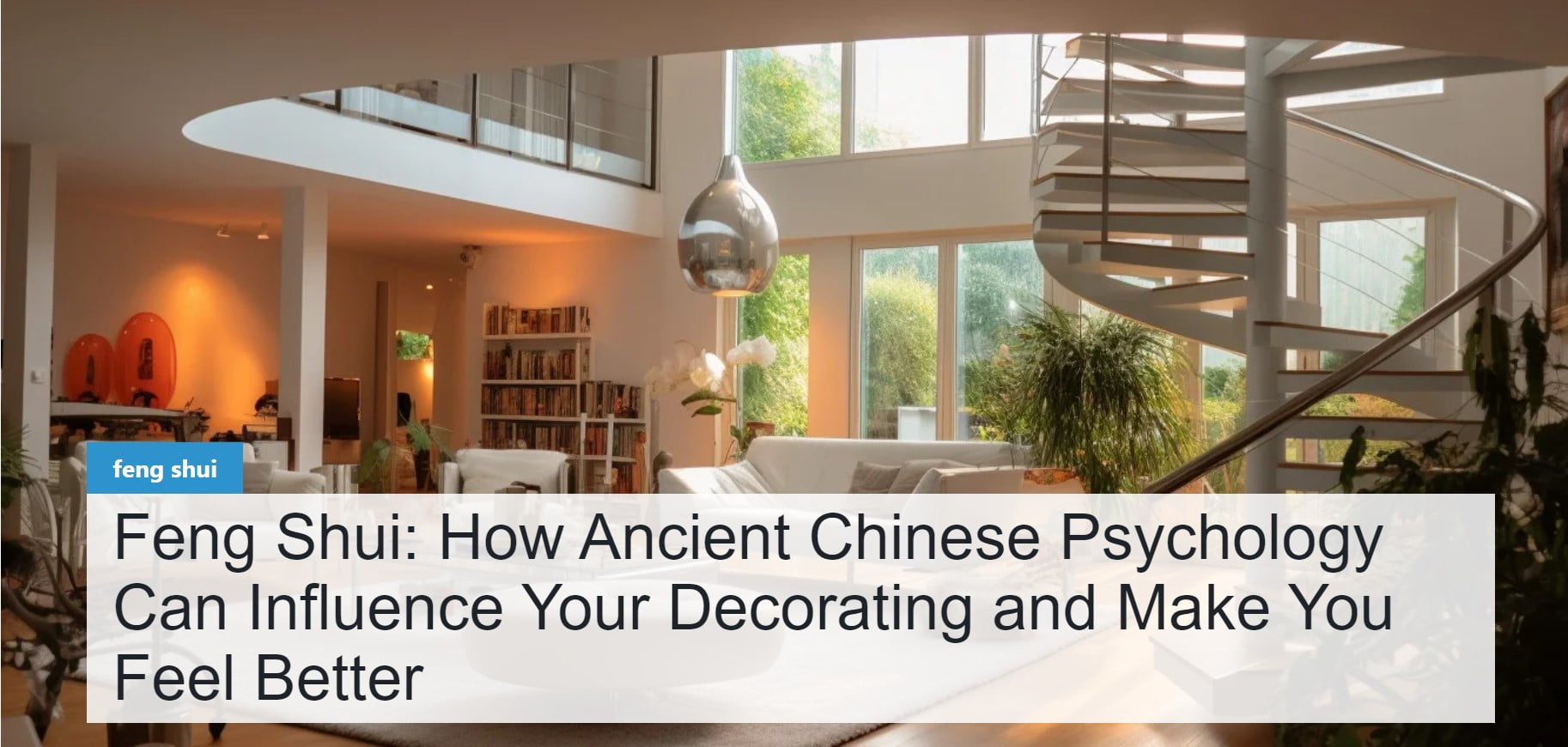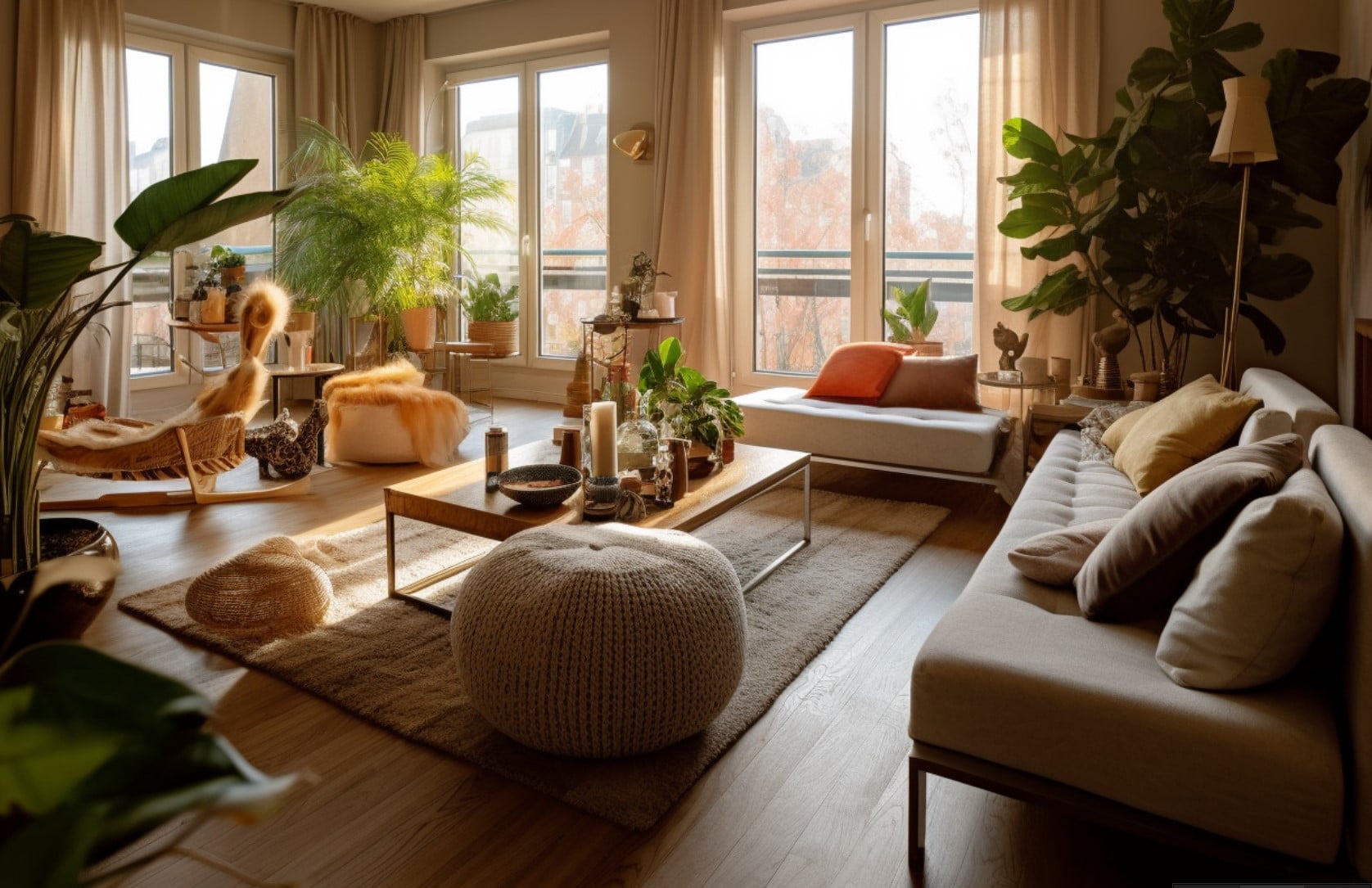We’re sure you’ve heard of Feng Shui before, right? This old Chinese art that seems to have made a massive comeback in recent years. Well, hang in there, we’re going to dive into this fascinating world of energy and design together, and who knows, maybe your house will be the next hot spot in the neighborhood thanks to our guide! Let us show you how Feng Shui can not only transform your home, but your life as well.

feng-shui-chinese-home-decoration
check out more: Learn about Osate, a Japanese storage philosophy that aims to harmonize environmental energy
Table of Contents
Feng Shui and interior design
You see, Feng Shui isn’t just a decorating style – it’s like the psychology of your home. You know that weird feeling you sometimes get when you walk into a room that you can’t quite explain? There you have it! Feng Shui is like putting on glasses for the first time. Suddenly, everything is clearer and you understand better why you feel the way you are in a given space. And, as true decorating aficionados, we love the idea that our environment can influence our well-being.
How does Feng Shui work?
This is where things get really interesting. Feng Shui is based on the idea that everything in our environment, from furniture to colors to light, has energy (or “Chi”) that can affect our mood and health. It’s as if each object in your home had its own personality. Imagine that, a grumpy sofa or a cheerful coffee table!
“Chi” energy
In Feng Shui, the important thing is to circulate the “Chi”, this energy, in a harmonious way. It’s as if your house were a big body and every room, every object, were its organs, working in symbiosis to give you a feeling of well-being. This can be the position of your bed, the orientation of your desk or even the color of your walls.
The importance of the 5 elements
In Feng Shui, the five elements – wood, fire, earth, metal and water – also play a key role. It’s all about balancing these elements in your space to create a harmonious ambiance. For example, if you feel stressed, the Water element, associated with relaxation, can help you. You can represent it with blue or black colors, or round objects.

feng-shui-chinese-home-decoration-2
How to apply Feng Shui in your home?
So how do you translate all this into practice, right? Let’s see how you can use Feng Shui to improve your interior design and your well-being.
The Bagua, your best friend
The Bagua is an essential tool in Feng Shui. It’s like a map that helps you decipher your space and determine where to place certain elements. Imagine yourself playing a giant board game, where every move counts. Sounds fun, right?
The front door, where it all begins
The front door, according to Feng Shui, is the point through which the “Chi” enters the house. It’s a bit like the first impression on a date. So you want it to be welcoming and clear. Remember, no shoes or coats lying around!
The living room, heart of the house
Your living room is probably where you spend the most time. In Feng Shui, it is related to health and family. Consider an open layout, lots of natural light , and plants to symbolize growth. We tell you, your sofa has never been so important!
The bedroom, your sanctuary
The bedroom, that place where you retire at the end of a long day. In Feng Shui, your bed should be oriented so that you can see the door, but not directly in front of it. It’s as if you were the captain of your ship, ready to face any storm, even while sleeping!
The kitchen, source of food and prosperity
The kitchen, according to Feng Shui, is linked to prosperity. Keep it tidy and clean to attract abundance. Also remember to include the five elements. For example, fire can be represented by copper pans, and earth by clay pots.
Feng Shui is much more than simple decoration rules. It’s a way of seeing your home as a
living, breathing being that has its moods and can help you feel better. So why not try? After all, if your house could talk, it’d probably tell you it’s craving a little change! Remember, the key is to find the balance that suits your own energy. Up to you!